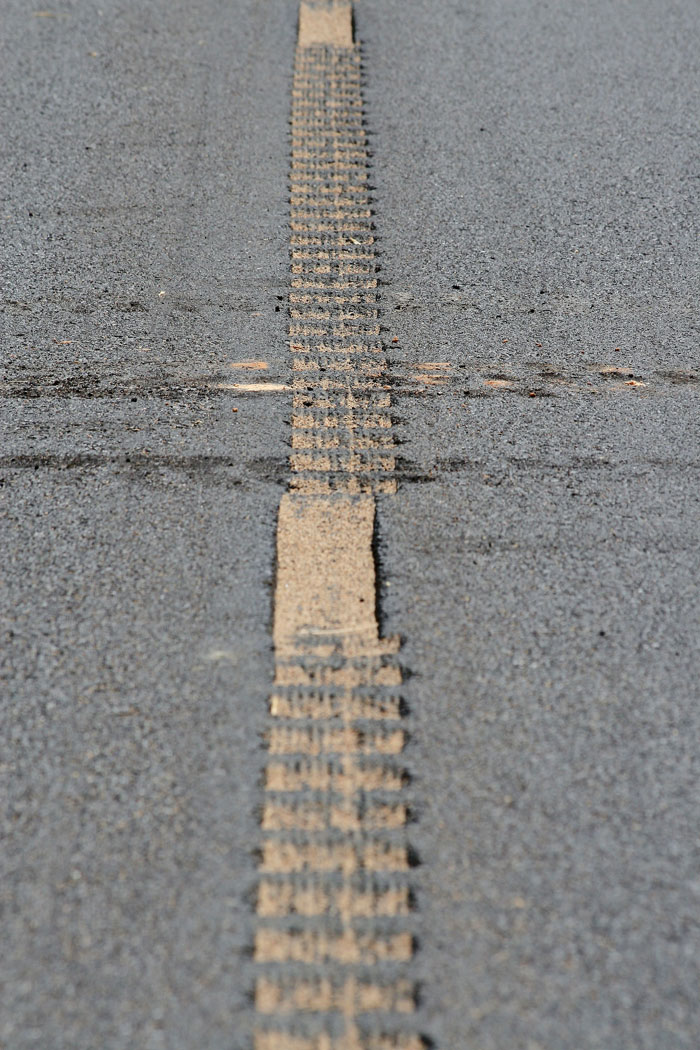Transportation Defined: Rumble Strips
Transportation Defined: Rumble Strips

If you’ve ever drifted a little too far outside a travel lane, only to be jolted back to attention with a not-so-subtle shake, you know what rumble strips are.
For the drivers out there who never have encountered a rumble strip, let us explain a little further…
Rumble strips are indentations often placed on the shoulders of highways to alert drivers that the edge of the paved roadway surface is near.
The concept may be simple, but rumble strips aren’t last-minute additions. There’s a lot of thought that goes into installing these safety features.
How they’re made
ADOT’s current standard calls for rumble strips to be ground into the asphalt pavement. A grinding wheel on a special moving vehicle is used to grind (or carve) the rumble strips into the road.

A close up look at a rumble strip.
Rumble strips are installed after the pavement surface has fully hardened. Previous ADOT rumble strips (used in the 1980s) were installed with a special wheel in hot asphalt, however, this method doesn’t provide the level of rumble feedback (that not-so-subtle shake we mentioned earlier) as do the current designs.
Want to know more?
Rumble strips are ground to a depth of 3/8 inches every 12 inches, with a 10-foot gap every 40 feet to allow bicyclists to cross the rumble pattern without dropping into the depressions (on roads that allow bicyclists). They come in 6-inch, 8-inch and 12-inch widths, depending on the roadway type and shoulder width.
Rumble strips are typically placed about 1 foot to the outside of the edge line, but can be placed under the edge line if the shoulder width is narrow. On divided highways, rumble strips are usually placed on both shoulders (left and right). ADOT is starting to phase in the use of centerline rumble strips to potentially reduce the chances of head-on and sideswipe crashes (see photo above).
Rumble strips are NOT typically placed in urban or suburban areas due to noise considerations.
You can learn more about ADOT’s policies concerning rumble strips (and other pavement markings) by checking out the ADOT website.
Transportation Defined is a series of explanatory blog posts designed to define the things you see on your everyday commute. Let us know if there's something you'd like to see explained ... leave a comment here on the blog or over on our Facebook page!
